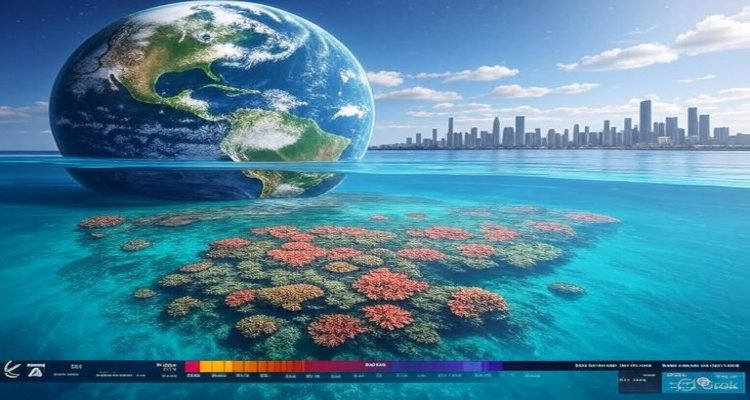Earth’s Hidden Signals: What Data Tells Us About the Environment
Data-driven science reveals hidden signals in Earth’s environment, offering insights into climate change, biodiversity loss, and the planet’s future.
Introduction: Reading the Planet’s Pulse
Earth speaks in signals—rising temperatures, shifting rainfall, melting ice, and even microscopic changes in ocean chemistry. But these voices are often silent to the human ear. Instead, scientists turn to data, the coded language of our planet, to decode its warnings. From satellite imagery and sensor networks to deep-sea probes, environmental data reveals truths that headlines often miss: that Earth is changing faster, and more profoundly, than ever before.
Context & Background: The Age of Environmental Data
Over the past three decades, advancements in technology have turned the planet into a monitored system. Satellites circle Earth 24/7, tracking greenhouse gases, ice-sheet dynamics, and deforestation in real time. Ocean buoys record acidity levels, while drones scan forests for biodiversity.
The global database is vast—terabytes of climate records, atmospheric readings, and ecological surveys. But raw numbers alone are not the story. The patterns within this data highlight hidden trends: coral reefs whitening before collapse, methane leaks invisible to the eye, and shifts in bird migration signaling ecosystem stress.
Main Developments: Signals the Numbers Reveal
Data analysis over the last decade has surfaced several urgent environmental signals:
- Climate Acceleration: NASA and NOAA report that the past nine years have been the warmest in recorded history, a data signal of human-driven warming.
- Biodiversity Decline: AI-assisted satellite imagery has revealed a drastic drop in insect populations across agricultural landscapes, threatening food chains.
- Ocean Acidification: Continuous pH monitoring shows the oceans are 30% more acidic than in pre-industrial times, eroding coral reefs and shellfish habitats.
- Air Quality Shifts: Remote sensors now detect urban heat islands and rising particulate matter in megacities, directly correlating to health risks.
These findings aren’t abstract—they represent Earth’s coded distress calls, uncovered only when data is analyzed holistically.
Expert Insight: Decoding the Warnings
“Environmental data is like an MRI of our planet,” says Dr. Lila Hernandez, an environmental systems analyst at the University of California. “The scans don’t just show symptoms—they show underlying causes. If we ignore these signals, we risk waiting until it’s too late to act.”
Public sentiment echoes this urgency. A Pew Research survey shows that 70% of young adults globally trust environmental data more than political promises, indicating a shift toward science-backed awareness.
Impact & Implications: Why It Matters
The implications of hidden signals are vast:
- Policy Decisions: Governments rely on satellite data to draft emissions policies and monitor compliance.
- Business Accountability: Carbon-tracking data is reshaping corporate ESG (Environmental, Social, Governance) strategies.
- Everyday Lives: Air quality apps now empower citizens to track health risks in real time.
Ignoring these signals could accelerate crises: food insecurity from pollinator loss, climate migration triggered by rising seas, and economic shocks from disrupted ecosystems. Conversely, acting on data offers hope—restoration projects, renewable energy expansion, and smarter land use all rely on accurate readings of Earth’s condition.
Conclusion: Listening to Earth’s Data Voice
Earth does not shout. It whispers through patterns, numbers, and anomalies. From polar ice melt to forest canopy decline, the signals are there, waiting for interpretation. The future depends on whether humanity chooses to listen. Data doesn’t just describe the environment—it tells us what’s coming next. Acting on these hidden signals could define the difference between crisis and resilience for generations ahead.
Disclaimer: This article is for informational and educational purposes only. It draws on scientific studies and expert insights but does not replace professional environmental or policy advice.











